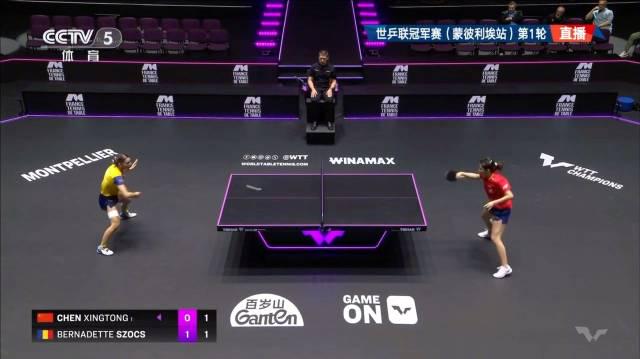I was scrolling through Weibo during my lunch break at a dim sum restaurant in San Francisco when I stumbled upon the hashtag #陈幸同蒙彼利埃止步首轮. The video clip from CCTV Sports showed Chen Xingtong losing 0-3 to Szocs in the WTT Montpellier Champions—her quick exit felt like a punch to the gut. But what hit me harder? The endless buffering circle that froze right as she missed a crucial forehand. My tea went cold while I waited for the stream to catch up, and I thought, ‘This is why my dad back in China always complains I never watch live sports with him.’
It reminded me of last year’s Asian Games, when I tried to stream a table tennis final from my apartment in Toronto. The video stuttered every time a player served—their movements became a jerky slideshow, like a glitchy GIF. I could hear my neighbor cheering through the wall (he was watching a local broadcast), while I stared at pixelated players. Later, I learned that over 60% of overseas Chinese face similar geo-blocking issues with sports content, according to a 2024 diaspora media survey. It’s not just about missing points; it’s about feeling disconnected from those shared moments.
Chen’s match got me thinking about my cousin in Melbourne—she’s a huge fan and once stayed up till 3 AM to watch a live broadcast, only for it to buffer during match point. She sent me a voice note, her voice groggy: ‘I literally dreamed about spinning serves because the stream cut off!’ We laughed, but it’s these small frustrations that pile up. It’s not just sports; think of those variety shows or dramas that drop while we’re asleep, and by the time we wake up, spoilers are everywhere. The time difference alone is tough, but add geo-blocks? It’s like trying to hug someone through a glass wall.
Honestly, I’m no tech expert—I still mix up VPNs and VIP subscriptions sometimes. But as someone who’s missed one too many live events, I get why this matters. When Chen Xingtong walked off the court in Montpellier, I wondered how many fans overseas saw it in real time versus those who caught a laggy replay. If you’ve ever faced this, you’re not alone. Drop a comment below: what’s the one show or game you desperately wanted to watch but couldn’t due to restrictions? Maybe we can swap tips and make those screens load a little faster.
How to Use Sixfast: A Quick Start Guide

Sixfast is a lightweight acceleration tool designed to optimize your internet connection for gaming, streaming, and other online activities. Here’s how to get started:
1. Download and Install
Visit the official Sixfast website and download the client for your device (Windows, macOS, Android, or iOS). Follow the instructions to install.
2. Sign Up and Log In
Open the app and register with your email or phone number. You can also log in using WeChat, Apple ID, or other supported platforms.
3. Redeem Free Membership with Code “666”
After logging in, go to the “Profile” or “Account” section and look for “Redeem Code” or “Gift Code.” Enter 666 to receive free VIP membership time—perfect for trying out premium acceleration features.
PC:

mobile:

4. Select a Game or App
Choose the game or application you want to speed up. Sixfast supports popular titles like Genshin Impact, PUBG, Honor of Kings, and more.
5. Choose Region and Start Acceleration
Sixfast will automatically recommend the best server based on your location, or you can manually select one. Tap “Start” to begin acceleration.
6. Enjoy Low Latency
Once connected, launch your game or app and enjoy smoother, faster performance with reduced ping and lag.
Try Sixfast today and level up your online experience!


